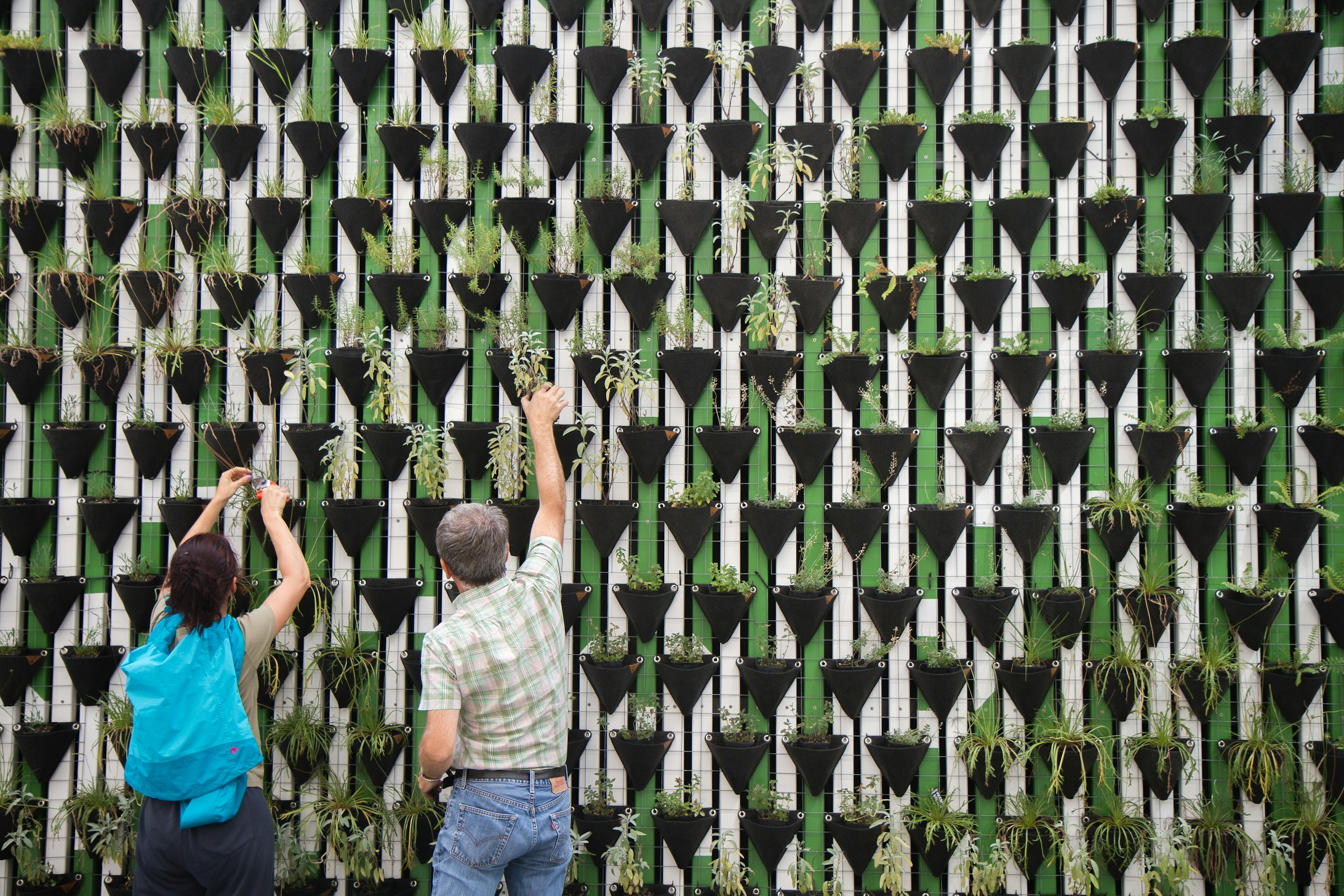The heart of a home often blooms in the garden. When we think of gardens, we imagine sprawling spaces filled with lush greenery, fragrant blooms, and the soothing symphony of chirping birds. But what if space is scarce? Does that mean you have to compromise on your dream garden? Not at all. If you don’t have the luxury of horizontal space, go vertical!
Creating a vertical garden is not just about space-saving; it’s about reimagining your walls as living canvases, where you can grow a variety of plants. Vertical gardening is a dynamic, visually stunning, and highly productive approach to gardening that is perfect for small backyards. It’s time to unfurl the green carpet—upwards!
Dans le meme genre : What Are the Best Ways to Incorporate Thermal Mass in Home Design for Natural Heating and Cooling?
Getting Started with Vertical Gardening
Before we dive into the nuts and bolts of vertical gardening, let’s take a moment to understand what it is. A vertical garden is a gardening method where plants grow upwards on a wall or vertical trellis. This technique makes efficient use of space, and it’s an excellent solution for those who yearn for a garden but have limited space.
Creating your vertical garden can be a fun and rewarding DIY project. All you need are the right tools, some creativity, and a little bit of planning and preparation.
Dans le meme genre : What’s the Most Aesthetic Way to Construct a Rain Barrel System in a Suburban Home?
Selecting the Right Plants for Your Vertical Garden
Choosing plants for your vertical garden isn’t just about picking your favorites. You need to consider factors like the plant’s growth habit, light requirements, and compatibility with other plants.
Climbing plants, like ivy and honeysuckle, are the natural choice for vertical gardens. They grow upwards without needing much support and can cover large areas quickly. However, these plants are just the beginning. Edible plants like tomatoes, peppers, and strawberries can also thrive in vertical gardens, as can a multitude of herbs. Succulents are perfect for dry, sunny walls, while ferns and hostas will love a shady wall.
DIY Vertical Garden Ideas
Creating your vertical garden doesn’t have to be an expensive endeavor. With a bit of imagination, you can turn everyday items into functional and beautiful planters. Here are few DIY ideas to inspire you.
A hanging shoe organizer can make a fantastic vertical planter. Its pockets are just the right size for small plants, and its design allows for easy watering and drainage.
Another idea is to use wooden pallets. They are often available for free and can create a rustic, chic look. Simply fill the slats with soil and plant your chosen plants.
If you’re handy with tools, you can create a trellis from bamboo poles or old ladders and hang pots from it. This not only provides lots of growing space but also adds a unique aesthetic element to your garden.
Maintaining Your Vertical Garden
Once your vertical garden is up and blooming, it’s crucial to keep it healthy and vibrant. This involves regular watering, feeding, pruning, and occasionally replacing plants.
Most vertical gardens will require daily watering, especially during the warmer months. A drip irrigation system can be a very efficient way to water your wall garden. It delivers water directly to the roots of plants, reducing evaporation and saving your time.
Regular feeding is also crucial. Use a good quality organic compost when planting, and top up with a liquid fertilizer during the growing season.
Finally, pay attention to the health of your plants. If a plant is diseased or not thriving, it’s better to replace it before the problem spreads to other plants.
Transforming Walls into Living Art
A vertical garden is more than just a space-saving solution; it’s a living, breathing work of art that will transform your small backyard into an oasis of beauty and tranquility. Whether you’re looking to grow your own herbs and vegetables or create a stunning floral display, vertical gardening is the way to go.
Remember, the sky (or rather your ceiling) is the limit when it comes to vertical gardening. By using walls, fences, and other vertical spaces, you’re not just gardening; you’re redefining what a garden can be. So roll up your sleeves, get creative, and let your garden grow—vertically!
Choosing the Best Tools and Materials for Your Vertical Garden
Choosing the right tools and materials for your vertical garden is critical in ensuring its success. The kind of materials you use will depend on the types of plants you wish to grow, the location of your garden, and your personal preference. You’ll need a sturdy structure that can support the weight of your plants as they grow. You might also need containers or pockets to hold your plants, a trellis or a wall mount to guide their growth, and of course, the right soil and nutrients.
For creating a DIY vertical, you can start with basic materials like a wooden pallet, some landscaping fabric, a staple gun, and some potting soil. If you’re upcycling an old ladder or shoe organizer, you’ll need some paint and maybe some waterproofing sealant as well. If you want to make a more elaborate living wall, you’ll need a metal or plastic frame, plastic sheeting, fabric for the plants to root into, and an irrigation system.
Planters come in a variety of materials, including terracotta, ceramic, plastic, and wood. Each material has its pros and cons: terracotta is breathable but fragile, ceramic is stylish but heavy, plastic is lightweight but can degrade in sunlight, and wood is natural but can rot. Choose a material that will work best for your needs and for the plant’s requirements.
In terms of tools, you’ll need a good pair of gardening gloves, a trowel for planting, and pruning shears to maintain your plants. You might also need a drill if you’re mounting your vertical garden to a wall.
Remember, a well-constructed vertical garden will not only ensure the healthy growth of your plants but will also enhance the aesthetics of your outdoor space.
Personalizing Your Vertical Garden
Personalizing your garden is where the real fun begins. This is your chance to infuse your personality into your backyard garden. You can play around with color themes, plant types, and even different materials for your vertical structure.
Color is a powerful tool in any design. You can choose plants that flower in your favorite colors or plants with interesting foliage that add color throughout the year. You can also paint your planter boxes or trellis to match or contrast with your plants.
Consider adding decorative elements to your vertical garden. Hanging decorations, fairy lights, or garden ornaments can add a whimsical touch. You can also incorporate a water feature or mirror to add an extra dimension to your vertical garden.
Don’t forget the practical elements too; if you love cooking, create a vertical herb garden near your kitchen door for easy access. If you have kids, consider growing edible plants that they can pick and eat. A vertical wall of strawberries, for instance, would be a big hit.
If you have more than one vertical garden, you can create different themes for each. You might want a tropical oasis on one wall, a fragrant herb garden on another, and a colorful flower display on a third. The possibilities are limited only by your imagination.
Conclusion: Embrace the Vertical Garden Revolution
Creating a vertical garden in your small backyard is not only a practical solution to space constraints but also an exciting opportunity to redefine traditional gardening. From choosing the right plants and materials, personalizing your garden, and maintaining it well, you can create a remarkable living wall that serves as a testament to your creativity, love for nature and commitment to sustainability.
Remember, vertical gardening is more than just a trend—it is a powerful tool that allows you to maximize your space, grow your own food, improve air quality, and transform concrete walls into vibrant ecosystems. As we continue to grapple with the challenges of urban living, vertical gardens present a compelling solution that is not only attractive but also environmentally friendly.
So, whether you’re an experienced gardener longing to expand your green space or a beginner looking to start a garden from scratch, vertical gardening offers endless possibilities. So why wait? Start creating your beautiful vertical garden today and join the vertical gardening revolution!






